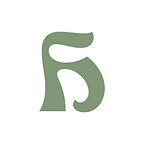Muslims in China during the Japanese Occupation
On February 12, 2019, Kyoto University published more than 35,000 photographs taken during the Japanese occupation of China between 1936 and 1945. The photo collection was taken by the North China Transportation Company, founded in Beijing in April 1938 by the Japanese occupation government in charge. in charge of the management of railways, expressways, rivers and ports in Northern China. In the process of digitizing the photo archive, there is an AI feature for Automatic Colorization on black and white photos so that we can find out what colors are in the photo.
I was very interested in what conditions were like for Muslims in China at that time, and here are some photos I have collected of Muslims in China during the Japanese occupation that are in the archives of the North China Transportation Company.
Niujie, Beijing
The Niujie area of Beijing is one of the oldest Muslim settlements in existence. Here is several Muslim activities in Niujie during the Japanese occupation.
Masjid Tianqiao (demolished), Beijing
Most of the Islamic places in the old city of Beijing were built during the Ming Dynasty, while most of the mosques on the outskirts of the city were developed in the Qing Dynasty. Due to the revolution of the Republic of China, several new mosques were built, the most famous being the Tianqiao Mosque.
Photo of the Tianqiao Mosque in March 1939. The Flyover Mosque is located between four and five Fuchang Streets north of Xinnongtan. It was built in 1926 and the time of demolition is unknown. Its original location is now Beijing Economic College.
Zhangjiakou
Zhangjiakou / 张家口 is the name of a prefecture-level city located in northwestern Hebei province in North China, bordering Beijing to the southeast, Inner Mongolia to the north and west, and Shanxi to the southwest. Here are some photos of Muslim activities.
Hohhot, Inner Mongolia
The minaret over the gate of the Gansui Masjid in Hohhot in November 1939. Gansui Masjid, also known as “North Masjid”, was built in the Qing Dyansty (Xianfeng period) and was originally an Islamic primary school. In 1921, the Muslims Li Fengzao and Su Jinpo (following new teaching, namely Ikhwani), who came to Hohhot from the Northwest China, joined the local Ikhwani Muslims to buy 12 acres in Wangjia Vegetable Garden, ten rooms at Waitong Street, Beimen, Suiyuan. After three and a half years of construction, it was finished, and named “Gansui Masjid”, commonly known as the North Masjid. Since then, the North Masjid has become the center of the Hohhot Ikhwani teaching.
In 1962, the North Masjid was demolished, and later merged with the West Masjid, as Northwest Masjid, and rebuilt in 1986.
Those are some photos that I can collect from a total of 35,000 photos taken during the Japanese occupation of China between 1936 and 1945, especially about Muslim life. There are many more photos, please see the link below.
